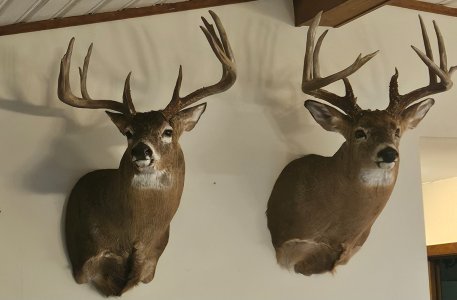Howboutthemdawgs
5 year old buck +
I’m using 170 as a proxy for a total upper end representation of what is possible in my neck of the woods. It could be 140 or 190 for others. The score is the metric that can follow age, albeit loosely. 150 is an awesome deer 100/100 times. It would just be nice for some bucks to have the ability to live long enough to express truly upper end potential.
What percent of 130” 3 year old bucks die of old age in the Midwest? I’d guess zero nowadays. I bet 20 years ago it was significantly higher. We are too efficient now
What percent of 130” 3 year old bucks die of old age in the Midwest? I’d guess zero nowadays. I bet 20 years ago it was significantly higher. We are too efficient now


